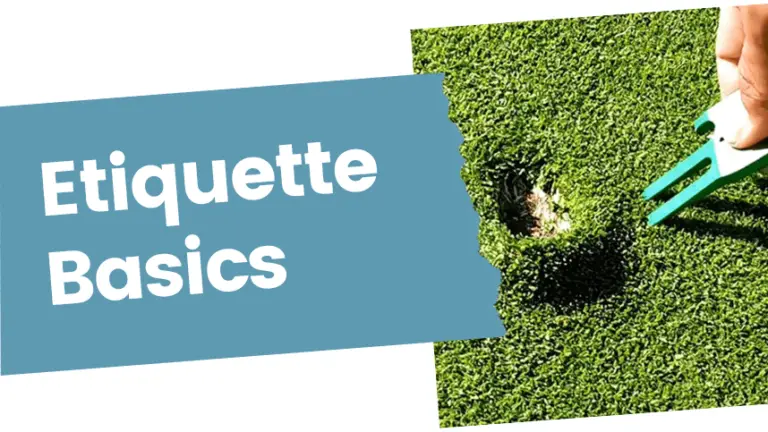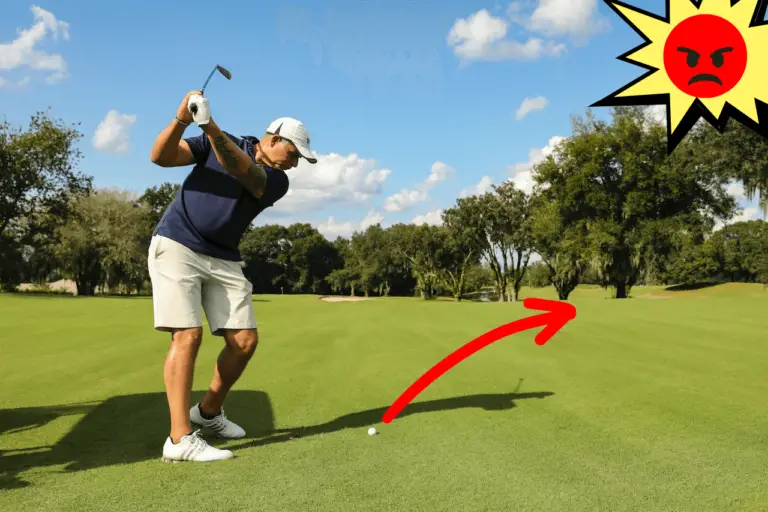Golf Fitness Drills

I love golfing, but… it can also be pretty demanding on the body. That’s why in order to improve your game and avoid injury, it’s important to incorporate a golf-specific fitness routine into your training.
In this post, we’ll go over some key aspects of golf fitness and share some exercises and tips to help you take your game to the next level. Whether you’re a pro, a well-seasoned amateur with back problems, or just starting out fresh, there’s something here for everyone. So read on, and start incorporating golf fitness into your training today!
The importance of fitness in golf
Fitness is a huge part of golf. As a golfer, you know that it’s not just about hitting the ball, it’s about being able to do it consistently and for long periods of time – And that’s where fitness comes in.
First off, being physically fit can make a huge difference in your game. When you’re fit you have more endurance; which means you can play more rounds or longer tournaments without getting tired. And let’s be real, who doesn’t want to play more golf?
Fitness also helps with flexibility – something crucial for a good golf swing. When you’re more flexible you can generate more power and speed in your swing, which leads to longer and straighter drives. And if you’re someone like me and struggle with distance off the tee, this is especially helpful.
But it’s not just about performance, fitness also helps prevent injuries. And let’s face it, nobody wants to be sidelined with an injury. That’s why more and more professional golfers are focusing on fitness.
Common golf-related injuries and how to prevent them
#1: Lower Back Pain
Alright, let’s talk about low back pain, ’cause you know, this is something that I personally struggle with from time to time. All that repetitive twisting motion of the golf swing can really do a number on your spine. It puts a lot of strain on the muscles and joints of the lower back, you know what I mean? And let me tell you, a bad back is not fun.
So, what can you do about it? Well, first things first, warming up before you hit the links is crucial. I’m talking stretching exercises that focus on the lower back and some light cardio to get the blood flowing. You know, just to get everything loose and ready for the round.
And honestly, even if you’re not feeling pain, it’s still a good idea to do some stretching and warm up exercises. It’s better to prevent any potential injuries before they happen, you know? And trust me, once you start feeling that twinge in your back, it can be pretty tough to shake it off.
So, my advice, take some time to warm up and stretch before your round. It’s not gonna take that much extra time, but it could make all the difference in the world when it comes to your back.
#2: Golfer’s Elbow (Elbow Tendinitis)
Golfer’s elbow is another common injury among golfers. It’s caused by overuse of the muscles that control the wrist and fingers. You might feel pain or discomfort in your elbow and it can be quite frustrating, trust me, I’ve been there… But don’t worry, there are ways to prevent and manage it.
So, what can you do about it? Well, first things first, using proper technique when swinging the club is key. I’m talking smooth, controlled motion and avoiding any sudden jerks or twists. And it’s also a good idea to switch up the clubs you use, so you’re not putting too much strain on any one muscle group.
And honestly, even if you’re not feeling pain, it’s still a good idea to use proper technique and vary your club usage. It’s better to prevent any potential injuries before they happen, you know? And trust me, once you start feeling that twinge in your elbow, it can be pretty tough to shake it off.
So, my advice, pay attention to your swing technique and switch up the clubs you use. It’s not gonna take that much extra time or effort, but it could make all the difference in the world when it comes to your elbow.
#3: Should Injuries
Shoulder injuries are also common in golf, especially among amateur players who may not have developed proper technique. The rotator cuff muscles in the shoulder are particularly easy to strain… and if they are overworked, it can lead to pain and discomfort. The best way to avoid these injuries are to focus on maintaining good posture throughout the swing. This means keeping your shoulders square to each other during your swing and avoiding any excessive rotation of the upper body.
#4: Wrist Injuries
Finally, wrist injuries are also common in golf and can happen often if you grip the club too tightly. This can cause swelling of the tendons in your wrist – leading to pain and discomfort. To prevent wrist injuries, it’s important to use a relaxed grip on the club and avoid gripping it too tightly.
Warm-up drills for golfers
Here are a few warm-up drills that you can use to improve your golf swing:
At the gym:
#1: Dynamic stretching
Start with some dynamic stretching exercises such as leg swings, arm circles, and torso twists. This will help to loosen up your muscles and prepare them for the workout.
#2: Cardio
Do a short cardio warm-up such as walking, jogging or jumping jacks. This will get your heart rate up and get blood flowing to your muscles.
#3: Squats
Perform a set of squats, this will help activate your legs and core muscles
#4: Push-ups
Perform a set of push-ups, this will help activate your chest, triceps, and core muscles.
#5: Planks
Hold a plank for 30 seconds, this will help activate your core, shoulders, and back muscles.
#6: Rowing
Rowing machine is a great way to warm up your upper body, back, and core muscles.
#7: Lunges
Perform a set of lunges, this will help activate your legs, hips, and core muscles.
#8: Arm-circles
Perform arm circles, this will help activate your shoulders, arms and core muscles.
Before a round:
#1: Wrist rotations
Simply rotate your wrists in a circular motion, going forward and backward.
#2: Shoulder rotations
Stand with your feet shoulder-width apart and hold a club behind your back with both hands. Slowly rotate your shoulders in a circular motion, going forward and backward.
#3: Squats
Do a few squats to activate your leg muscles and get them warmed up.
#4: Half-swings
Start with short half-swings, gradually increasing the range of motion. This helps to prepare your body for the golf swing and also helps to warm up your muscles.
#5: Chipping and pitching
Warm up your short game by hitting a few chips and pitches before moving on to full swings.
#6: Putting practice
Putting is an important aspect of the game, so warming up with a few putts on the practice green is a great way to get ready for a round.
#7: Balance exercise
Take a few practice swings while standing on one leg, this can help to improve balance and stability and activate some of your smaller muscle groups.
#8: Slow-motion swings
Take a few practice swings in slow motion, focusing on proper form and mechanics. This can help to ingrain good habits and make sure your swing is in the right position before you start hitting full shots.
Note: Remember to always stretch and warm up properly before hitting the course, as this will help prevent injuries and improve your overall performance.
Golf-specific exercises to improve strength and flexibility
There are several exercises that can help improve strength and flexibility specifically for golf. Here are a few examples:
#1: Medicine ball rotations
Improve the strength and stability of your core and hips
Hold a medicine ball at chest level, and then rotate your torso to the right and left while keeping your hips and legs facing forward.
#2: Single-leg deadlifts
Improve the strength and stability of your legs and hips
Hold a dumbbell in one hand and stand on one leg. Slowly bend forward at the hips while keeping your back straight, and then return to the starting position.
#3: Shoulder rotations
Improve the flexibility and mobility of your shoulders
Stand with your feet shoulder-width apart and hold a club behind your back with both hands. Slowly rotate your shoulders in a circular motion, going forward and backward.
#4: Lat pulldowns
Improve the strength and stability of your back and shoulders
Sit at a lat pulldown machine and grasp the bar with an overhand grip. Pull the bar down to your chest and then slowly return to the starting position.
#5: Spiderman stretch
Improve the flexibility and mobility of your hips
Start in a push-up position, bring one knee to your elbow and then return to the starting position. Repeat on the other side.
#6: Seated twist
Improve the flexibility and mobility of your trunk and obliques
Sit on the floor with your legs crossed and your back straight. Hold a club with both hands and twist your torso to the right and left, keeping your feet firmly planted on the ground.
#7: Half-kneeling cable chop
Improve the strength and stability of your core
Kneel on one knee and hold a cable handle at chest level. Rotate your torso and bring the cable down towards the opposite hip, then return to the starting position.
#8: Plank walkouts
Improve the strength and stability of your core and shoulders
Start in a push-up position and walk your hands out as far as you can while keeping your body in a straight line. Then walk your hands back to the starting position.
#9: Lunges with a twist
Improve the strength and stability of your legs, hips, and core
Hold a club at chest level and take a step forward with one leg. As you lower your body, twist your torso in the opposite direction.
#10: Standing hamstring stretch
Improve the flexibility and mobility of your hamstrings
Stand with your feet hip-width apart and bend forward at the hips, keeping your knees straight. Reach towards your toes and hold the stretch for a few seconds.
Note: It’s important to consult with a professional trainer or physical therapist before starting any new exercise program. They can help you create a personalized plan that takes into account your specific needs and goals.
Cool-down stretches to prevent injury
To help prevent injuries, it’s important to stretch and warm up properly before hitting the course. Here are a few cool-down stretches that can help:
Chest and shoulder stretch
Loosen tight muscles in the chest and shoulders
To do this stretch, stand with your feet shoulder-width apart and place your hands behind your back, palms facing outward. Slowly lift your arms up and back, feeling the stretch in your chest and shoulders. Hold this stretch for 20-30 seconds and repeat 2-3 times.
Wrist and forearm stretch
Loosen tight muscles in the wrists and forearms
Extend your arm out in front of you with your palm facing up. Use your other hand to gently pull your fingers back, feeling the stretch in your wrist and forearm. Hold this stretch for 20-30 seconds and repeat 2-3 times on each arm.
Upper back and shoulder blade stretch
Loosen tight muscles in the upper back and shoulders
Sit on the edge of a chair with your feet flat on the ground. Cross your arms and place your hands on your opposite shoulders. Gently round your upper back and shoulders, feeling the stretch in your upper back and between your shoulder blades. Hold this stretch for 20-30 seconds and repeat 2-3 times.
Note: Remember to always stretch slowly and gently, and never force yourself into a stretch. If you feel any pain or discomfort, stop the stretch and consult with a healthcare professional.
Final Thoughts: Getting Fit for Golf
This article provided a comprehensive guide on golf fitness and the importance of incorporating a golf-specific fitness routine into your training to improve your game and avoid injury.
Golf fitness exercises and drills are an essential part of improving your game and reducing the risk of injury. By incorporating regular fitness routines and practicing specific drills, you can increase your strength, flexibility, and overall skill level on the course.






